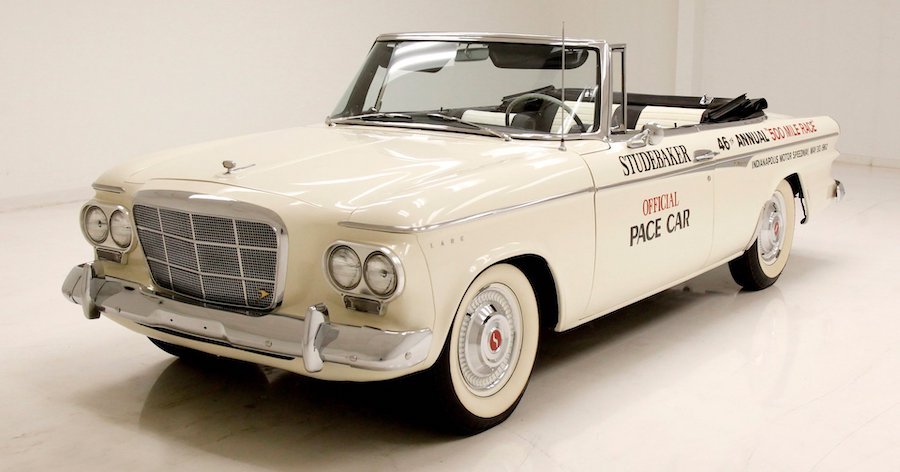This Restored 1962 Studebaker Lark Is an Indy 500 Pace Car You Probably Never Knew Existed

Formed in 1954 following a merger, the Studebaker-Packard Corporation was already losing money by 1956. With no way to compete with the Big Three in the full-size car market, Studebaker decided to join the emerging compact market with the Lark.
Essentially a full-size Studebaker with reduced overhangs and a shortened wheelbase ahead of the firewall, the Lark could still seat six people comfortably while providing lots of luggage room. The Lark was quite popular initially, moving 131,075 units in 1959 and 120,465 examples in 1960. However, as Ford, Plymouth, and Chevrolet joined the market, Lark sales began to drop. Ultimately, the nameplate could not save the company, and Studebaker went bankrupt in 1966.
But even though it failed to keep America's oldest automaker afloat, the Lark has quite a few things to brag about. It debuted the flow-through "Refreshaire" ventilation with air extractor vents integrated into the taillights and spawned the Wagonaire, a station wagon with a retractable sliding rear roof section. It also gave us the Super Lark, America's first compact muscle car. The Lark also paced the Indianapolis 500 at a time when the race officials preferred vehicles from the Big Three.
Studebaker first paced the iconic race in 1929 when George Hunt drove a President Roadster. In 1940, Harry Hartz led the pack in a Studebaker Champion. The automaker returned to pacing duties in 1952 with a Commander convertible.
The Lark joined the Indy 500 Pace Car ranks in 1962. It was the first car built by a company other than Ford, GM, and Chrysler to pace the event after nine years. The Lark was also the last Indy 500 pace vehicle provided by an independent automaker.
The Daytona convertible was driven by Indy 500 veteran Sam Hanks and was one of 38 examples provided to race officials for the weekend. Studebaker also delivered a new Avanti as an "honorary" pace car. The 34th example produced, it was awarded to race winner Roger Ward.
The whereabouts of these Indy 500 Larks today are unknown, but Studebaker also rolled out a limited production version for the public. It's unclear how many were sold, but some have survived to tell the story. This museum-grade example is one of those rigs.
Spotted sitting pretty at Classic Auto Mall, this pace car is the result of a comprehensive restoration and looks outstanding inside and out. It sports the correct off-white color and a classy two-tone interior.
The Lark is factory-correct under the hood as well. The restored 289-cubic-inch (4.7-liter) V8 showcases a black block and yellow valve covers and mates to a correct three-speed Flight-O-Matic transmission. There's no word if the engine is numbers-matching, but the car runs and drives like it should.
The 854-mile (1,374-km) reading on the odometer isn't authentic, but just a hint that this Studebaker wasn't driven much since its restoration. This rare Daytona Lark Pace Car is offered at $40,900.




Related News
